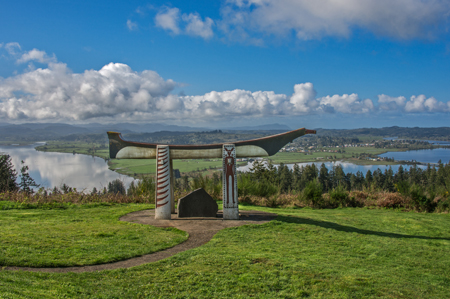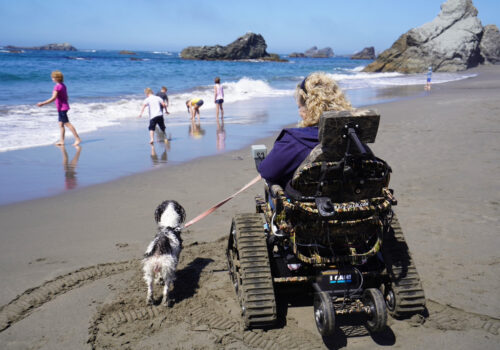
In early 2018, whisk your mind back to the early 1800s by catching a performance of “Astoria Part One” (Jan. 13-Feb.17) and “Astoria Part Two” (Jan. 20-Feb. 18) at The Armory theater in Portland.
The play is based on Peter Stark’s best-selling book, “Astoria,” which detailed the ill-fated Astor Expedition. It was John Jacob Astor’s quest to found the West Coast’s apex of world trade — or so it was schemed by the beaver fur-trading German immigrant and New York financier. Astor was America’s first millionaire and a visionary who hired two parties — one traveling by land, one by sea — to establish a trading hub at the mouth of the Columbia River. However harsh logistics and the onset of the War of 1812 foiled Astor’s grand plan.
“The story is truly an edge-of-your-seat thriller,” says Claudie Jean Fisher, a spokeswoman for Portland Center Stage. “Many men died; some went insane. The stage productions bring it all to life with lots of wonderful folk music, lively action, and fabulously detailed costumes. Both productions are designed to be enjoyed alone as independent stories, so you don’t have to see both shows to enjoy a wonderful glimpse into this part of our collective history.”
Astor’s eponymous city has points of interest related to the expedition, including Fort Astoria Park, on the corner of 15th Avenue and Exchange Street, where you’ll find a memorial and a replica (built in 1956) of his primary fur-trading post.
For exhibits and information about the founding of Astoria, and early pioneers, take a wander through the Clatsop County Historical Society’s Heritage Museum, a short walk from Fort Astoria Park. Continue your expedition a few blocks toward the water to the Columbia River Maritime Museum, which houses a fascinating exhibit about the Columbia River Bar. The family-friendly museum also features a replica model of the Tonquin, the 94-foot-long ship Astor’s party used to sail to the Columbia River from New York City.
For lunch and a pint, hop back over to Fort George Brewery, which is named for the 1813 British invasion, when Britain conquered Fort Astoria and renamed it Fort George.
One of the biggest obstacles for the expedition was crossing the extremely dangerous Columbia River Bar, known as the Graveyard of the Pacific. (Nearly 2,000 ships have sunk there.) The Peter Iredale 1906 shipwreck on the beach at Fort Stevens State Park gives visitors an idea how harrowing the crossing often was.
Finally, back in town take a lovely drive up to Coxcomb Hill, where you can step to the top of 125-foot-tall Astoria Column for an epic Columbia River Bar panorama. The column features 14 murals, one depicting the Astor Expedition’s arrival on the Tonquin. Also on the hilltop is a replica of a canoe owned by Chief Comcomly, a Chinookan who assisted the Expedition.
Story by Michael H. Kew
Photo by Larry Andreasen



